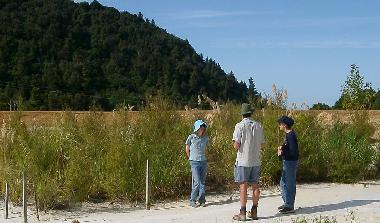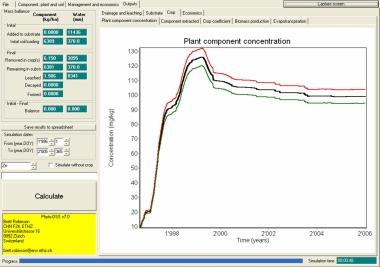Phytomanagement
Successful phytomanagement creates value from contaminated land while minimising environmental risk. Plant transpiration and root-growth to immobilise contaminants by reducing leaching, controlling erosion, creating an aerobic environment in the root-zone, and adding organic matter to the substrate that binds contaminants. Some plants can kill pathogens in biosolids.
Phytoextraction removes TEs from the soil by repeated crops of plants that accumulate large amounts of one or more target TEs in their above-ground biomass. The harvested plant material is removed from the site. There are few examples of successful phytoextraction. This technology is limited by the long period required for cleanup, the restricted number of target TEs that can be extracted, the limited depth that can be accessed by roots, and the difficulty of producing a high-biomass crop of the desired species. There is also concern about TE-accumulating plants providing an exposure pathway for toxic elements to enter the food chain. The addition of chelants to enhance plant-TE uptake, invariably increases the risk of TE leaching.
Phytoremediation technology is site specific due to the plethora of environmental variables that affect plant growth and TE mobility. Most contaminated sites contain a heterogeneous mixture of several elemental and organic contaminants. Plant-growth may be limited by other environmental variables, such as low pH, low nutrient availability, salinity, insufficient aeration or low water availability. The commercial success of phytoremediation is thus dependent on convincing decision makers that phytoremediation can satisfy environmental regulations. Obviously, field demonstrations at each site are not practical Our current research aims to elucidate the key mechanisms of plant-TE interactions to develop mechanistic models are required to calculate the effect of phytoremediation on TE fluxes. Central to such models is an understanding of root-TE interactions in these typically heterogeneous media.


